-
Countries
-
Data and Analysis
-
Special Focus
-
Crisis Responses
Assessment Report
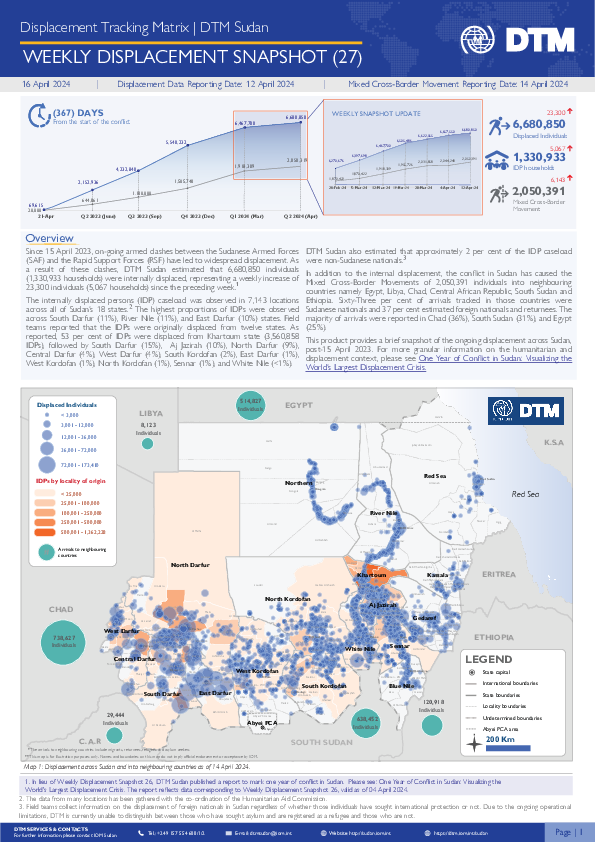
Contact
DTM Sudan; dtmsudan@iom.int
Language
English
Location
Sudan
Period Covered
Apr 05 2024
Apr 12 2024
Activity
- Mobility Tracking
- Baseline Assessment
This report reflects data corresponding to Weekly Displacement Snapshot 27 dataset, valid as of 12 April 2024. The dataset is available here.
Overview
On 15 April 2023, armed clashes erupted between the Sudanese Armed Forces (SAF) and the Rapid Support Forces (RSF) in multiple cities across Sudan. Clashes initially took place in cities across Northern and Khartoum states, later spreading across the Darfur and Kordofan regions.
Highlights
- DTM Sudan estimates that 6,680,850 individuals (1,330,933 households) were recently internally displaced.
- The IDP caseload was observed in 7,143 locations across all of Sudan’s 18 states.
- The highest proportions of IDPs were observed across South Darfur (11%), River Nile (11%), and East Darfur (10%).
- Field teams reported that the IDPs observed were originally displaced from twelve states. The majority (3,560,858 IDPs, 54%) were reportedly displaced from Khartoum state; followed by South Darfur (15%), Aj Jazirah (10%), North Darfur (9%), Central Darfur (4%), West Darfur (4%), South Kordofan (2%), East Darfur (1%), West Kordofan (1%), North Kordofan (1%), Sennar (1%) and White Nile (<1%).
- IOM-DTM also reported that an estimated 2,050,391 mixed cross-border movements were made into neighbouring countries.
- This product provides brief insights into those displaced in Sudan post-15 April 2023. For more granular information on the IDP caseload and the displacement context, please see IOM-DTM's One Year of Conflict in Sudan: Visualizing the World's Largest Displacement Crisis.
Note: In lieu of Weekly Displacement Snapshot 26, DTM Sudan published a report to to mark one year of conflict in Sudan. Please see: One Year of Conflict in Sudan: Visualizing the World's Largest Displacement Crisis. The report reflects data corresponding to Weekly Displacement Snapshot 26 dataset, valid as of 04 April 2024.
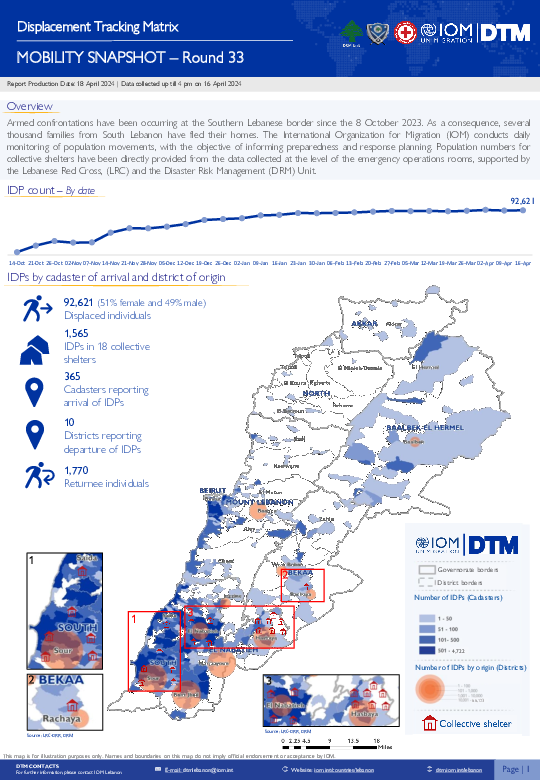
Contact
dtmlebanon@iom.int
Language
English
Location
Lebanon
Period Covered
Oct 10 2023
Apr 16 2024
Activity
- Mobility Tracking
- Baseline Assessment
Since October 8 there has been an increase in cross-border incidents between Israel and Lebanon, resulting in the displacement of people both within the South and elsewhere within the country. Since October 10, the Displacement Tracking Matrix (DTM) has been conducting the daily monitoring of population movements. The objective of the exercise is to inform preparedness and response planning.
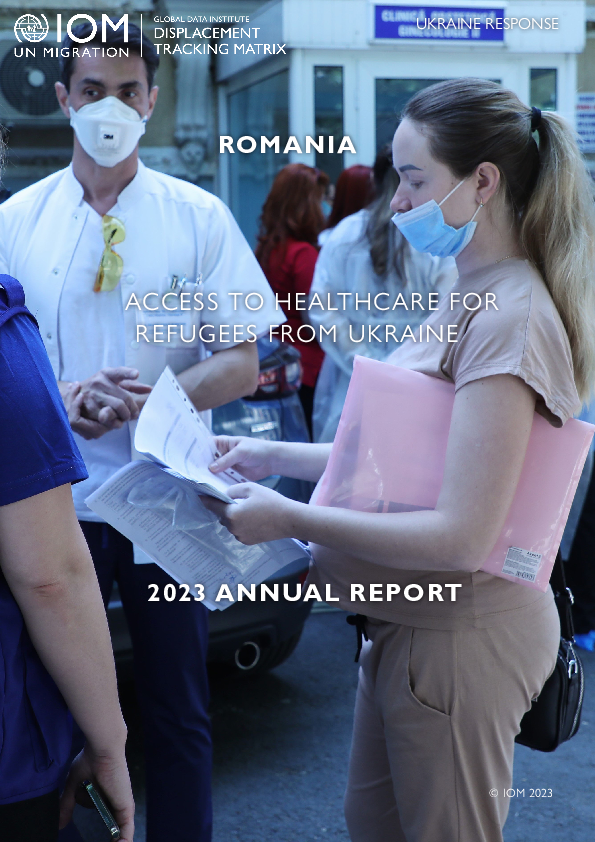
Contact
DTM Europe, DTMMediterranean@iom.int
Language
English
Location
Romania
Period Covered
Jan 01 2023
Jan 31 2024
Activity
- Survey
Key findings:
- Specific needs* include chronic diseases or serious medical conditions (60%), visual impairment (18%), mobility impairment (8%) and pregnant or lactating women (8%).
- Priority needs include medicine (32%) and healthcare services (67%).
- More male respondents reported needing medicine (35%) than their female counterparts (31%)
- Female respondents required healthcare services (69%) more than men (65%).
- Groups with elderly required medicine (40%) more than healthcare services (30%).
- Groups with children needed healthcare services (56%) more than medicine (46%),
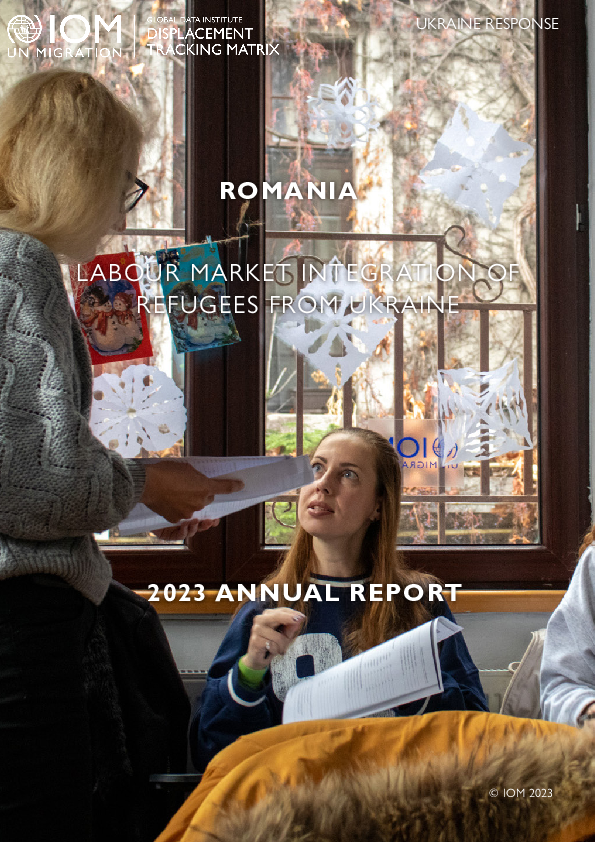
Contact
DTM Europe, DTMMediterranean@iom.int
Language
English
Location
Romania
Period Covered
Jan 01 2023
Dec 31 2023
Activity
- Survey
Key Findings:
- Among respondents, 43 per cent are active (employed or unemployed), and 46 per cent are inactive (student status, parental leave, retirement, unemployment and not looking for a job).
- Within active population, 54 per cent are employed and 46 are unemployed.
- 90 per cent of respondents do not speak Romanian
- Top barriers to employment include: language barrier (55%), where to find jobs (40%) and lack of jobs suited to qualifications (40%)5
- Top reasons for unemployment and not looking for a job: parental leave (39%), helping family (15%), retired (15%) and no need to work (14%)
- Top occupations: services and sales (28%), plants and machinery operations (21%), education (16%), administrative fields (9%)
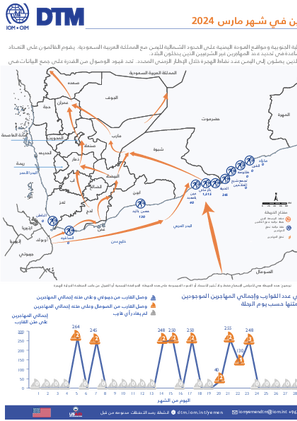
Contact
DTM Yemen, DTMYemen@iom.int
Language
English
Location
Yemen
Period Covered
Mar 01 2024
Mar 31 2024
Activity
- Flow Monitoring
- Mobility Tracking
- Baseline Assessment
يقوم سجل مراقبة التدفق التابع لمصفوفة تتبع النزوح (FMR) التابع للمنظمة الدولية للهجرة في اليمن بمراقبة وصول المهاجرين على الحدود الساحلية الجنوبية ومواقع العودة اليمنية على الحدود الشمالية لليمن مع المملكة العربية السعودية. يقوم القائمون على التعداد الموجودون في نقاط مراقبة التدفق بتسجيل المهاجرين الوافدين والمواطنين اليمنيين العائدين لتحديد أنماط الهجرة المختلفة، ولتقديم تقديرات كمية للمساعدة في تحديد عدد المهاجرين غير الشرعيين الذين يدخلون البلاد.
لا تمثل الهجرة القسرية جميع التدفقات في اليمن وينبغي فهمها على أنها مؤشر فقط لاتجاهات الهجرة للعدد الإجمالي غير المعروف للمهاجرين الذين يصلون إلى اليمن عند نقاط الهجرة خلال الإطار الزمني المحدد. تحد قيود الوصول من القدرة على جمع البيانات في بعض نقاط وصول المهاجرين.
وفي محاولة للحد من تدفق المهاجرين الداخلين إلى اليمن، والذي يعبر البلاد بشكل أساسي متجهاً نحو المملكة العربية السعودية ودول الخليج الأخرى، بدأت حملة عسكرية مشتركة في أغسطس 2023. ركزت هذه الحملة على ساحل محافظة لحج، نقطة دخول مهمة لعدد كبير من المهاجرين (بحد أقصى 15,714 مهاجرًا في مارس 2023). احتجز الجيش المهربين وطارد قواربهم، مما أدى إلى انخفاض مطرد في تدفق المهاجرين عبر هذا الساحل حتى توقف تماما خلال الأشهر الخمسة الماضية، مع استثناء واحد في منتصف ديسمبر/كانون الأول 2023 عندما تمكن قارب يحمل 110 مهاجرين من الوصول إلى الساحل. أرض.
في مارس 2024، سجلت مصفوفة تتبع النزوح التابعة للمنظمة الدولية للهجرة في اليمن دخول 1,930 مهاجرًا إلى اليمن، بزيادة قدرها 11 بالمائة مقارنة بالشهر الماضي (1,744). تعتبر شبوة عادة نقطة دخول للمهاجرين من الصومال ونادرا ما تشهد مغادرة المهاجرين من جيبوتي بسبب المسافة الكبيرة بين جيبوتي وشبوة. وهكذا، كانت شبوة وجهة وصول 93 في المائة من المهاجرين المغادرين من باري، الصومال (1,800). ارتفع العدد الإجمالي للمهاجرين الذين يدخلون عبر شبوة بنسبة ثلاثة في المائة في مارس (1,800) مقارنة بشهر فبراير 2024 (1,744). علاوة على ذلك، سجل الفريق في محافظة أبين هبوط مهاجرين جدد في مديرية أحور - مركز حصن بلعيد. ووصل عدد المهاجرين الذين وصلوا عبر ساحل أبين إلى 130 مهاجراً (جميعهم غادروا الصومال).
وفقًا لمصفوفة تتبع النزوح، شكلت الحركات الناجمة عن النزاع 57% من جميع الحركات الواردة في مارس 2024. وقد لوحظت هذه الحركات حصريًا في شبوة، مصدرها باري بالصومال (21% أطفال، 23% نساء، 56% رجال).
ولاحظت مصفوفة تتبع النزوح زيادة في عدد العائدين اليمنيين بنسبة 36 بالمائة في مارس (4,226) مقارنة بشهر فبراير (3,116). علاوة على ذلك، في مارس 2024، تم ترحيل ما مجموعه 411 مهاجرًا (385 إثيوبيًا و25 يمنيًا وصوماليًا واحدًا) من عمان إلى مديريتي شحن وحوف في محافظة المهرة باليمن.
أجبرت الأزمة الإنسانية المتدهورة في اليمن العديد من المهاجرين على اتخاذ القرار الصعب بالعودة إلى بلدانهم الأصلية في القرن الأفريقي. وبحسب ما ورد قامت السلطات بترحيل آخرين. سجلت مصفوفة تتبع النزوح أنه في مارس 2024، اختار ما مجموعه 1,174 مهاجرًا إما القيام برحلة العودة المحفوفة بالمخاطر أو تم ترحيلهم بالقوارب من اليمن. وتتكون هذه المجموعة من 91 في المائة رجال، و7 في المائة نساء، و2 في المائة أطفال.
بالإضافة إلى ذلك، وثّق فريق مصفوفة تتبع النزوح في جيبوتي أنه خلال الفترة نفسها، انطلق ما مجموعه 1,177 مهاجرًا (92% رجال، و4% نساء، و4% أطفال) في رحلة خطيرة للعودة إلى وطنهم بالقوارب من اليمن. تسلط هذه الأرقام الضوء على التحديات الكبيرة التي يواجهها المهاجرون في اليمن والأوضاع اليائسة التي دفعتهم إلى القيام برحلات محفوفة بالمخاطر عبر البحر.
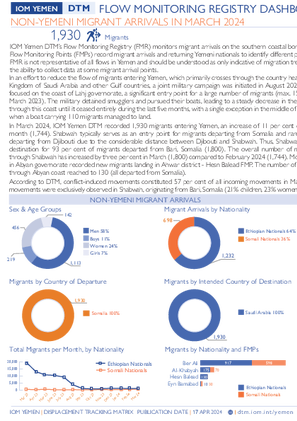
Contact
DTM Yemen, DTMYemen@iom.int
Language
English
Location
Yemen
Period Covered
Mar 01 2024
Mar 31 2024
Activity
- Flow Monitoring
- Mobility Tracking
- Baseline Assessment
IOM Yemen DTM’s Flow Monitoring Registry (FMR) monitors migrant arrivals on the southern coastal border and Yemeni return locations on Yemen's northern border with the Kingdom of Saudi Arabia (KSA). Enumerators placed at Flow Monitoring Points (FMPs) record migrant arrivals and returning Yemeni nationals to identify different patterns of migration, and to provide quantitative estimates to help define the population of irregular migrants entering the country.
FMR is not representative of all flows in Yemen and should be understood as only indicative of migration trends of the unknown total number of migrants arriving in Yemen at FMPs during the time frame indicated. Access constraints limit the ability to collect data at some migrant arrival points.
In an effort to reduce the flow of migrants entering Yemen, which primarily crosses through the country heading towards the Kingdom of Saudi Arabia and other Gulf countries, a joint military campaign was initiated in August 2023. This campaign focused on the coast of Lahj governorate, a significant entry point for a large number of migrants (max. 15,714 migrants in March 2023). The military detained smugglers and pursued their boats, leading to a steady decrease in the flow of migrants through this coast until it ceased entirely during the last five months, with a single exception in the middle of December 2023 when a boat carrying 110 migrants managed to land.
In March 2024, IOM Yemen DTM recorded 1,930 migrants entering Yemen, an increase of 11 per cent compared to last month (1,744). Shabwah typically serves as an entry point for migrants departing from Somalia and rarely sees migrants departing from Djibouti due to the considerable distance between Djibouti and Shabwah. Thus, Shabwah was the arrival destination for 93 per cent of migrants departed from Bari, Somalia (1,800). The overall number of migrants entering through Shabwah has increased by three per cent in March (1,800) compared to February 2024 (1,744). Moreover, the team in Abyan governorate recorded new migrants landing in Ahwar district - Hesn Balead FMP. The number of migrants arriving through Abyan coast reached to 130 (all departed from Somalia).
According to DTM, conflict-induced movements constituted 57 per cent of all incoming movements in March 2024. These movements were exclusively observed in Shabwah, originating from Bari, Somalia (21% children, 23% women, and 56% men).
DTM observed an increase in Yemeni returnees by 36 per cent in March (4,226) compared to February (3,116). Furthermore, in March 2024, a total of 411 migrants ( 385 Ethiopian, 25 Yemeni, and one Somali) were deported from Oman back to Hawf district of Al Maharah governorate, Yemen.
The deteriorating humanitarian crisis in Yemen has forced many migrants to make the difficult decision to return to their home countries in the Horn of Africa. Others are reported to have been deported by authorities. DTM recorded that in March 2024, a total of 1,174 migrants either opted to take the risky journey back or were deported by boat from Yemen. This group consisted of 91 per cent men, seven per cent women, and two per cent children.
Additionally, the Djibouti DTM team documented that during the same period, a total of 1,177 migrants (92 per cent men, four per cent women, and four per cent children) embarked on a dangerous journey back home by boat from Yemen. These numbers highlight the significant challenges faced by migrants in Yemen and the desperate situations that have driven them to undertake perilous voyages across the sea

Contact
DTM Europe, DTMMediterranean@iom.int
Language
English
Location
Republic of Moldova
Period Covered
Jan 01 2023
Dec 31 2023
Activity
- Survey
- Flow Monitoring
Key Findings:
- Among respondents, 41 per cent are active (employed or unemployed), and 53 per cent are inactive (student status, parental leave, retirement, unemployment and not looking for a job).
- Within active population, 64 per cent are employed and 36 per cent are unemployed.
- Before displacement, 81 per cent were employed and 19 per cent were unemployed.
- Top 4 sectors of employment includes: accommodation (13%), wholesale and retail (11%), education and science (10%) and human health and social work (9%)
- Satisfaction with job and skills matching is higher among men (74%) than women (71%)
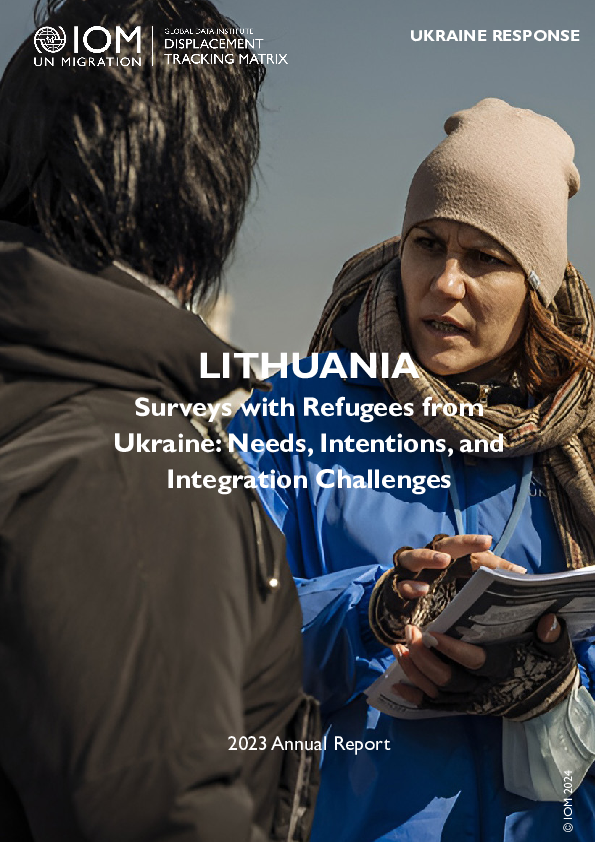
Contact
DTM Europe, DTMMediterranean@iom.int
Language
English
Location
Lithuania
Period Covered
Jan 01 2023
Dec 31 2023
Activity
- Survey
- Flow Monitoring
This report is based on a survey of displacement patterns, needs and intentions conducted by IOM’s Displacement Tracking Matrix (DTM) in the 11 countries included in the Regional Response Plan for Ukraine in 2023: 6 countries neighboring Ukraine – Belarus, Hungary, Poland, Republic of Moldova, Romania and Slovakia – and other 5 countries particularly impacted by the arrivals of refugees from Ukraine since the start of the war in February 2022 – Bulgaria, Czechia, Estonia, Latvia and Lithuania.
The analysis provided in this report is based on annual data collected from March to November 2023
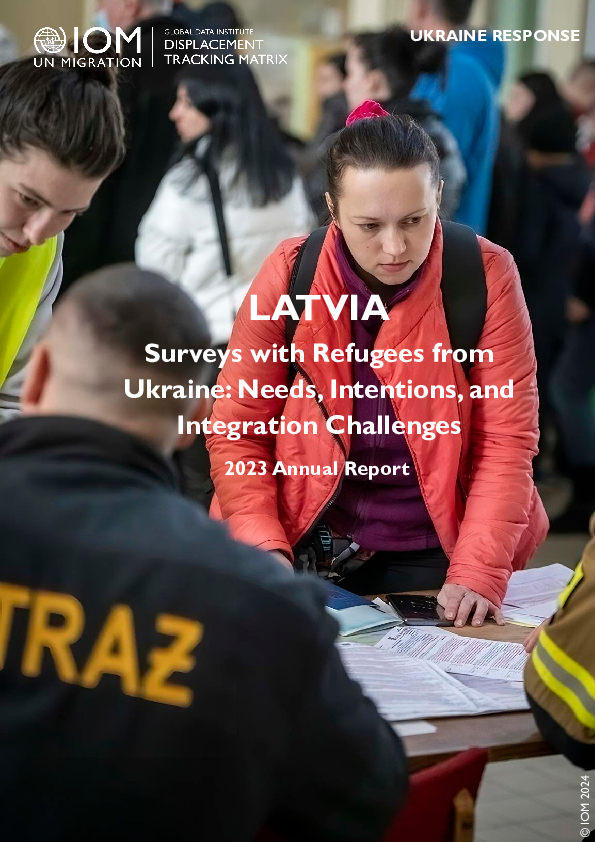
Contact
DTM Europe, DTMMediterranean@iom.int
Language
English
Location
Latvia
Period Covered
Jan 01 2023
Dec 31 2023
Activity
- Survey
- Flow Monitoring
This report is based on a survey of displacement patterns, needs and intentions conducted by IOM’s Displacement Tracking Matrix (DTM) in the 11 countries included in the Regional Response Plan for Ukraine in 2023: 6 countries neighboring Ukraine – Belarus, Hungary, Poland, Republic of Moldova, Romania and Slovakia – and other 5 countries particularly impacted by the arrivals of refugees from Ukraine since the start of the war in February 2022 – Bulgaria, Czechia, Estonia, Latvia and Lithuania.
The analysis provided in this report is based on annual data collected from January to December 2023.
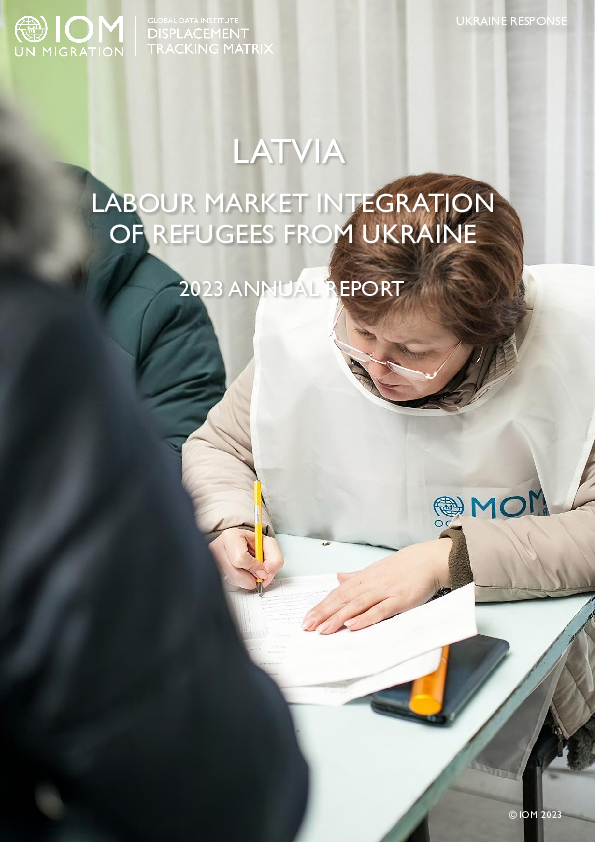
Contact
DTM Europe, DTMMediterranean@iom.int
Language
English
Location
Latvia
Period Covered
Jan 01 2023
Dec 31 2023
Activity
- Survey
From January to December 2023, Displacement Tracking Matrix (DTM) gathered information on the Needs, Intentions, and Integration Challenges faced by Ukrainian refugees in Latvia, conducting interviews with a total of 1,155 individuals throughout the year. This report explores the employment profiles and prospects of the adult respondents, with a special focus on those who have either expressed an intention to stay or have already established themselves in the country (N=171). These individuals, referred to as ‘stayers’ in this study, are actively investing their human and social resources to fully integrate into the host community. The report further narrows its analysis to a subset of 155 respondents who are within the working age bracket (18-64 years old), offering insights into their involvement in the labour market and detailing their experiences, needs, and intentions concerning employment in Latvia for the duration of their displacement.
Pagination
- Previous page
- Page 37
- Next page
